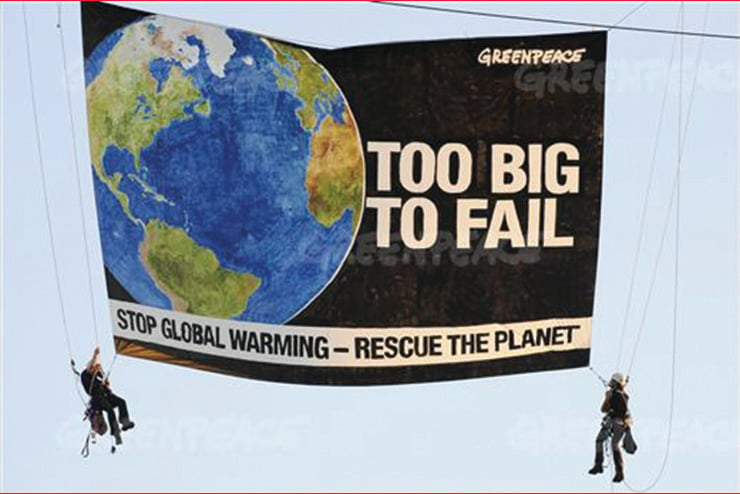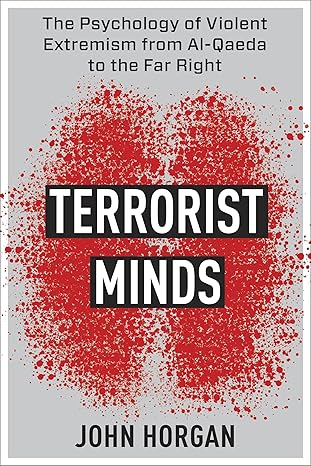Terrorist Minds: The Psychology of
Violent Extremism from Al-Qaeda to the Far Right
by John Horgan
Columbia University Press
248 pp., $30.00
The scholarly literature on terrorism offers precious few insights into the phenomenon it studies. It repeatedly draws attention to the same few aspects of the subject that anyone attentive to facts and possessed of even a basic knowledge of terrorism already knows. Terrorists are, for example, overwhelmingly young and male. This would not be difficult to predict even without any working knowledge of real terrorism. One needs only a definition of the phenomenon (the use of illegal violence to forward ideological goals) and an understanding of the propensity of young males to ideological extremism and violence.
Once one gets beyond that mundane level, though, the scholars in this field are left with little of coherence to report. John Horgan’s book is as informative as any recent academic study on this topic. That is to say, it comes up well short of a robust theory of why some individuals adopt terrorist ideology and perform or enable terrorist action.
Terrorist Minds does, however, illustrate rather nicely another point regarding terrorism and the peculiar blindness to one species of the genre displayed by academic researchers. Like most such studies, it expounds at length on Islamist and white nationalist forms of the phenomenon, but it has next to nothing to say about leftist terrorist minds.
Left-wing terrorism, whether historical or contemporary, is little recognized in the popular imagination because our media and academia carefully avoid giving it much attention. But it is not hard to demonstrate how it has shaped our history. At the turn of the 19th and into the 20th century, revolutionary anarchist terror was widespread. Its attacks included dozens of mail bombs, bomb attacks on Wall Street and the homes of the U.S. attorney general as well as numerous judges and elected officials, and even the assassination of President William McKinley. Later, in just one 18-month period during 1971-1972, for example, there were some 2,500 terrorist bombings in the U.S., or around five every day. That was by far the high point for terrorist activity in the country’s history in purely quantitative terms.
Virtually all these thousands of bombings in the ’70s were the work of leftist revolutionary groups such as the Weather Underground. Horgan is completely silent on the anarchist terror of the early 20th century, and he has little to say about the Weather Underground beyond noting a feature of its demographic makeup: “an all-white leadership comprised of many university graduates.” In this same section of the book, he briefly mentions another leftist terrorist group of the 1970s, the Symbionese Liberation Army, but again confines himself to a brief note to the effect that it was comprised of “a small clique of young, self-absorbed, guilt-ridden, emotionally and psychologically scarred white women.”
Horgan would have done better to spend more time with the details of these groups and their beliefs. Those details are informative regarding the quite different position they occupy in the thinking of American cultural elites compared to Islamist and white nationalist terrorists. Even casual students of the radical ’60s and ’70s know that several members of the Weather Underground accidentally blew themselves up in a New York City townhouse while making bombs intended for an attack on the Fort Dix Army base.
What is much less well known is that another possible target the terrorists considered for the murderous device they were building was a Columbia University administration office. Some four decades later, one of the surviving terrorists of that blast, Kathy Boudin, was released from prison after participating in a Brink’s truck heist that resulted in the deaths of three law enforcement officers.
Here we find a fascinating twist of history that allows insight into the general silence of academic commentators on terrorism concerning groups like the Weather Underground. Soon after being released, Boudin was hired as an adjunct professor at Columbia University.
There is yet more evidence of the academic coddling of leftist terrorists that might help explain the scholarly lack of interest in discussing their record of terror. Several of Boudin’s terrorist colleagues also enjoyed university careers after making war against their own country. They were welcomed back into our elite institutions by their ideological fellows. After emerging from life underground as fugitives from the law and being made to face nothing more than misdemeanor charges for their terrorist activity, the revolutionary couple Bernardine Dohrn and Bill Ayers wound up on the faculties of the Children and Family Justice Center of Northwestern University’s Law School and the College of Education of the University of Illinois at Chicago, respectively. Ayers eventually held the title of Distinguished Professor. After spending less than a year in jail for his various crimes with the Weather Underground, Mark Rudd taught mathematics at a community college in New Mexico. Rudd, like many other former Weathermen, now participates in radical left political activities once again, wearing the mantle of a wise old veteran of the ’60s.
Silence is also the rule of the academic left regarding the Black Liberation Army. Horgan gives them a fleeting mention, solely to highlight their recruitment strategy:
“The BLA sought Black nationalist revolution in the United States and was responsible for over twenty killings … [they] recruited heavily among common criminals, with the group’s goal to ‘contain that energy, point it in the right direction and make them beautiful …revolutionaries.’”
But much more could and should be said about the BLA and its place in American terror history. This group was open about its desire to provoke racial civil war in the U.S., and its avowed mechanism for doing this was to murder police officers.
Fatal assaults on two New York City police officers, Greg Foster and Rocco Laurie, and other unprovoked attacks on police were certainly the work of BLA cells under the leadership of a certain Joanne Chesimard. The BLA had few women members, but Chesimard was one of its most brutal and bloodthirsty. She would also direct several armed robberies of Brink’s trucks. Her eventual arrest came after a shootout with two New Jersey State Troopers, one of whom, Werner Foerster, was killed. She was tried and convicted.
Other BLA members smuggled weapons in while visiting Chesimard in prison and succeeded in escaping with her. She now lives in Cuba, still on the FBI’s most wanted list. Under her revolutionary alias of Assata Shakur, she is today hailed by the Black Lives Matter movement as an inspiration for their ideology. The BLM ideology demonstrably influenced recent black nationalist attacks on police along the lines of the BLA, for example, the Baton Rouge and Dallas police mass murders in 2016.
The absence of discussion of leftist terror is not just a failure of historical completeness. It is a refusal to consider the most common variety of terrorism our country has experienced in the last half-century. A 2013 Department of Homeland Security terrorism study gives a graphical representation of terrorist attacks since 1970. It shows that by far the largest wave was in the 1970s, during the heyday of leftist revolutionary terrorism.
Leftist terror was significant, not only in the 1970s but in the first decade and a half of the 21st century as well. Contrary to popular belief, the largest number of attacks did not come from right-wing groups—the highest ranking such group was an anti-abortion group that committed some 15 terrorist acts during those years—barely one a year. Well above them, in second and third place, were the Earth Liberation Front and the Animal Liberation Front, with 60 and 42 terrorist acts, respectively.
The leftist terrorist threat is far from gone in contemporary America. Antifa continues to enjoy widespread cover from mainstream media as well as academic sources, to the extent that the extreme nature of their platform is largely unknown in the public. Antifa mobilizes under the red flag of the Bolshevik Revolution and the black flag of anarchism. Both historical movements used terror as a standard element of their political agendas. Antifa is responsible for myriad acts that are legitimately considered terrorism. In early 2017, Antifa at the University of California, Berkeley attacked pro-Trump demonstrators with bricks, hammers, and homemade explosives. In July 2019, Antifa terrorist Willem Van Spronsen was shot by police as he attempted to bomb the U.S. Immigration and Customs Enforcement detention facility in Tacoma, Washington.
One aspect of Antifa’s reception, however, differentiates it from most other forms of contemporary terrorism. Unlike Islamist or white nationalist terror, Antifa’s worldview is represented inside American universities and in partisan publications by academic presses. Mark Bray, author of Antifa: The Anti-Fascist Handbook and assistant teaching professor of history at Rutgers University, is but one particularly obvious example. Antifa directly advocates for the physical assault of those Bray calls “fascists.” This category includes not only those who apply that label to themselves but also to “homophobes,” supporters of “patriarchy,” capitalism, and the police, and all who participate in unnamed “variet[ies] of oppression.” Antifa is mentioned but once in Horgan’s book, and there to summarily dismiss the idea that it can be considered a terrorist organization and ideology.
Academic studies of terror such as Terrorist Minds are of meager utility even in understanding the limited varieties of terrorism they examine. For insights into the forms of thought that drive far-left terror, they are utterly useless.


Leave a Reply